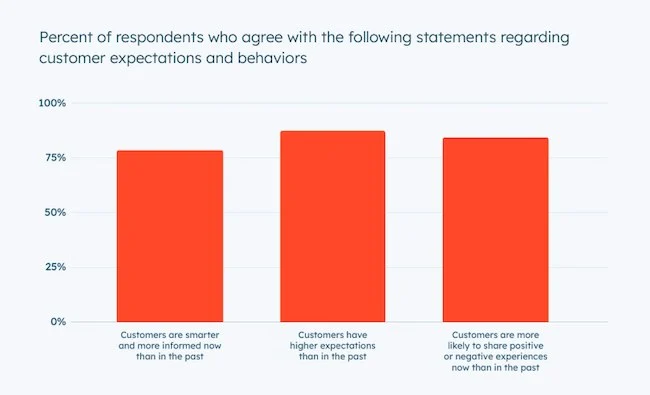How To Start A Business In 11 Steps (2024 Guide)

Before You Begin: Get in the Right Mindset
The public often hears about overnight successes because they make for a great headline. However, it’s rarely that simple—they don’t see the years of dreaming, building and positioning before a big public launch. For this reason, remember to focus on your business journey and don’t measure your success against someone else’s.
Consistency Is Key
New business owners tend to feed off their motivation initially but get frustrated when that motivation wanes. This is why it’s essential to create habits and follow routines that power you through when motivation goes away.
Take the Next Step
Some business owners dive in headfirst without looking and make things up as they go along. Then, there are business owners who stay stuck in analysis paralysis and never start. Perhaps you’re a mixture of the two—and that’s right where you need to be. The best way to accomplish any business or personal goal is to write out every possible step it takes to achieve the goal. Then, order those steps by what needs to happen first. Some steps may take minutes while others take a long time. The point is to always take the next step.
1. Determine Your Business Concept
Most business advice tells you to monetize what you love, but it misses two other very important elements: it needs to be profitable and something you’re good at. For example, you may love music, but how viable is your business idea if you’re not a great singer or songwriter? Maybe you love making soap and want to open a soap shop in your small town that already has three close by—it won’t be easy to corner the market when you’re creating the same product as other nearby stores.
If you don’t have a firm idea of what your business will entail, ask yourself the following questions:
- What do you love to do?
- What do you hate to do?
- Can you think of something that would make those things easier?
- What are you good at?
- What do others come to you for advice about?
- If you were given ten minutes to give a five-minute speech on any topic, what would it be?
- What’s something you’ve always wanted to do, but lacked resources for?
These questions can lead you to an idea for your business. If you already have an idea, they might help you expand it. Once you have your idea, measure it against whether you’re good at it and if it’s profitable.
Your business idea also doesn’t have to be the next Scrub Daddy or Squatty Potty. Instead, you can take an existing product and improve upon it. You can also sell a digital product so there’s little overhead.
What Kind of Business Should You Start?
Before you choose the type of business to start, there are some key things to consider:
- What type of funding do you have?
- How much time do you have to invest in your business?
- Do you prefer to work from home or at an office or workshop?
- What interests and passions do you have?
- Can you sell information (such as a course), rather than a product?
- What skills or expertise do you have?
- How fast do you need to scale your business?
- What kind of support do you have to start your business?
- Are you partnering with someone else?
- Does the franchise model make more sense to you?
Consider Popular Business Ideas
Not sure what business to start? Consider one of these popular business ideas:
- Start a Franchise
- Start a Blog
- Start an Online Store
- Start a Dropshipping Business
- Start a Cleaning Business
- Start a Bookkeeping Business
- Start a Clothing Business
- Start a Landscaping Business
- Start a Consulting Business
- Start a Photography Business
- Start a Vending Machine Business
2. Research Your Competitors and Market
Most entrepreneurs spend more time on their products than they do getting to know the competition. If you ever apply for outside funding, the potential lender or partner wants to know: what sets you (or your business idea) apart? If market analysis indicates your product or service is saturated in your area, see if you can think of a different approach. Take housekeeping, for example—rather than general cleaning services, you might specialize in homes with pets or focus on garage cleanups.
Primary Research
The first stage of any competition study is primary research, which entails obtaining data directly from potential customers rather than basing your conclusions on past data. You can use questionnaires, surveys and interviews to learn what consumers want.
Surveying friends and family isn’t recommended unless they’re your target market. People who say they’d buy something and people who do are very different. The last thing you want is to take so much stock in what they say, create the product and flop when you try to sell it because all of the people who said they’d buy it don’t because the product isn’t something they’d buy.
Secondary Research
Utilize existing sources of information, such as census data, to gather information when you do secondary research. The current data may be studied, compiled and analyzed in various ways that are appropriate for your needs but it may not be as detailed as primary research.
Conduct a SWOT Analysis
SWOT stands for strengths, weaknesses, opportunities and threats. Conducting a SWOT analysis allows you to look at the facts about how your product or idea might perform if taken to market, and it can also help you make decisions about the direction of your idea. Your business idea might have some weaknesses that you hadn’t considered or there may be some opportunities to improve on a competitor’s product.

Asking pertinent questions during a SWOT analysis can help you identify and address weaknesses before they tank your new business.
3. Create Your Business Plan
A business plan is a dynamic document that serves as a roadmap for establishing a new business. This document makes it simple for potential investors, financial institutions and company management to understand and absorb. Even if you intend to self-finance, a business plan can help you flesh out your idea and spot potential problems. When writing a well-rounded business plan, include the following sections:
- Executive summary: The executive summary should be the first item in the business plan, but it should be written last. It describes the proposed new business and highlights the goals of the company and the methods to achieve them.
- Company description: The company description covers what problems your product or service solves and why your business or idea is best. For example, maybe your background is in molecular engineering, and you’ve used that background to create a new type of athletic wear—you have the proper credentials to make the best material.
- Market analysis: This section of the business plan analyzes how well a company is positioned against its competitors. The market analysis should include target market, segmentation analysis, market size, growth rate, trends and a competitive environment assessment.
- Organization and structure: Write about the type of business organization you expect, what risk management strategies you propose and who will staff the management team. What are their qualifications? Will your business be a single-member limited liability company (LLC) or a corporation?
- Mission and goals: This section should contain a brief mission statement and detail what the business wishes to accomplish and the steps to get there. These goals should be SMART (specific, measurable, action-orientated, realistic and time-bound).
- Products or services: This section describes how your business will operate. It includes what products you’ll offer to consumers at the beginning of the business, how they compare to existing competitors, how much your products cost, who will be responsible for creating the products, how you’ll source materials and how much they cost to make.
- Background summary: This portion of the business plan is the most time-consuming to write. Compile and summarize any data, articles and research studies on trends that could positively and negatively affect your business or industry.
- Marketing plan: The marketing plan identifies the characteristics of your product or service, summarizes the SWOT analysis and analyzes competitors. It also discusses how you’ll promote your business, how much money will be spent on marketing and how long the campaign is expected to last.
- Financial plan: The financial plan is perhaps the core of the business plan because, without money, the business will not move forward. Include a proposed budget in your financial plan along with projected financial statements, such as an income statement, a balance sheet and a statement of cash flows. Usually, five years of projected financial statements are acceptable. This section is also where you should include your funding request if you’re looking for outside funding.
Learn more: Download our free simple business plan template.
Come Up With an Exit Strategy
An exit strategy is important for any business that is seeking funding because it outlines how you’ll sell the company or transfer ownership if you decide to retire or move on to other projects. An exit strategy also allows you to get the most value out of your business when it’s time to sell. There are a few different options for exiting a business, and the best option for you depends on your goals and circumstances.
The most common exit strategies are:
- Selling the business to another party
- Passing the business down to family members
- Liquidating the business assets
- Closing the doors and walking away
Develop a Scalable Business Model
As your small business grows, it’s important to have a scalable business model so that you can accommodate additional customers without incurring additional costs. A scalable business model is one that can be replicated easily to serve more customers without a significant increase in expenses.
Some common scalable business models are:
- Subscription-based businesses
- Businesses that sell digital products
- Franchise businesses
- Network marketing businesses
Start Planning for Taxes
One of the most important things to do when starting a small business is to start planning for taxes. Taxes can be complex, and there are several different types of taxes you may be liable for, including income tax, self-employment tax, sales tax and property tax. Depending on the type of business you’re operating, you may also be required to pay other taxes, such as payroll tax or unemployment tax.






Responses